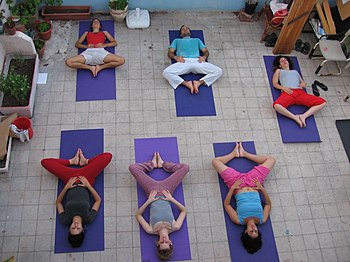What is metaphysics, and why should we bother studying it? What benefits does it have for humanity? What is its purpose? How will its teachings help advance society? How will it assist our civilization and culture to progress? How will our lives be re-created individually and collectively with the application of metaphysical principles? Questions abound concerning metaphysics, for people intuitively feel that it may have something precious to offer in terms of facilitating personal growth and self-empowerment.
Among those spiritually inclined, it has become a "prime directive" to understanding their lives in terms of metaphysical principles and concepts such as multi-dimensional realities, the Higher Self, love, karma, reincarnation, etheric energies, psychicism, oneness with all, cosmic beings, the ascension, etc., and some of the causes of this higher thinking and awareness is the thinning of the cosmic veil between dimensions; the increased contact with invisible forces; the influence of intense electromagnetic cosmic energies bombarding upon our planet and solar system at this time; the influx of higher spiritual beings incarnating in the physical realm; the discoveries of many ancient secrets left hidden in monumental structures and time capsules; scientific developments in hyper-space technologies, and shifts in its paradigms, etc.
Among those spiritually inclined, it has become a "prime directive" to understanding their lives in terms of metaphysical principles and concepts such as multi-dimensional realities, the Higher Self, love, karma, reincarnation, etheric energies, psychicism, oneness with all, cosmic beings, the ascension, etc., and some of the causes of this higher thinking and awareness is the thinning of the cosmic veil between dimensions; the increased contact with invisible forces; the influence of intense electromagnetic cosmic energies bombarding upon our planet and solar system at this time; the influx of higher spiritual beings incarnating in the physical realm; the discoveries of many ancient secrets left hidden in monumental structures and time capsules; scientific developments in hyper-space technologies, and shifts in its paradigms, etc.
All of these are occurring on a global scale, in every nation of this planet, and it is affecting every human being. So it would seem that humanity is awakening from its long sleep of forgetfulness and ignorance. The Tree of Life of immortality, enlightenment, and illumination will be found hidden in the seeds of the Tree of metaphysical knowledge--using the word "metaphysics" in its most spiritual, gnostic sense.
For thousands of years we have sought for truth, and most of the time from the wrong persons and in the wrong places--what we received were man-made opinions and beliefs which were forced upon our minds to be accepted as the "word of God," or the way that Nature had decreed, and that there is nothing that anyone can do to change it. While in our infancy, physically and spiritually speaking, we accepted everything told to us by organized religion, elders, and pedagogues as gospel and truth and we based our philosophy of life on the indoctrination imposed upon us and which subsequently formed our false sense of "conscience," and a poor understanding of spiritual values. This caused us great soulful sufferings and torment in succeeding years in our everyday life--an intense sense of shame, guilt, fear, and sin whenever we "violated" any so-called law of God formulated by theology; and it never occurred to us to question the systems, the mechanisms, and their origins that brought about our morbid condition. This naturally lowered our self-esteem. Conscience is not similar to the concept of the "still, small voice." The latter is the silent voice of the Spirit, whereas conscience in part, is simply the engrams or programs imprinted upon the subconscious mind. Conscience is also partially our memory of the negative consequences of our past actions impinging upon our conscious mind whenever we are about to act in a negative way resembling that of the past.
But to return from our digression: in past centuries we were told lies by false prophets and the ministers of religions that mediators between God and men were necessary; that theirs was the only way to God; that their race or sect were the chosen one of God; that everything that God would reveal to humanity lies in a single book; that God punishes us for sinning and perhaps in the afterlife casts us into hell; that illness, old-age, and death were a natural part of life; that one no longer receives any new revelation from God, etc. We were told to fear God, to see everything as separated from us, to believe that we were born in sin, that the sexual act is shameful, that we were simply mortals subjected to the whims of God for the determination of our fate, that we were inherently bad--and even more--that the world was flat! While at the same time heinous crimes against the Holy Human Spirit were being committed by those very same representatives of religions such as the crimes of persecution, torture, and murder of innocent human beings who simply were more spiritually and psychically inclined or conceived the universe from a different viewpoint--and all these atrocious acts were carried-out in the name of Religion, Love and God. The Crusades and the Inquisition are dark chapters in the history of man.
One of the points that we wish to put forth here is that since time began the dark, retrogressive forces have infiltrated or have tried infiltrating every institution that have sought to improve the condition of the soul, and the expression of the human spirit in our mundane lives. They have always opposed and attacked the true representatives of God and steered seekers of truth away from them. Their purpose is to stall human evolution and progression indefinitely, that human beings cringe and cower under their manipulative control, that humans be made into slaves and automatons answering to their every whim. They work openly and subtly, physically and psychically. They make us believe that we need them--their services and wares--and we are psychologically controlled to be dependent upon them and return to them again and again for their assistance--usually for a large fee or with some loss on our part. We will not be too specific here, we simply caution our readers to "be wary, be very, very wary!" Treading the spiritual metaphysical path will assist one to be more discerning as to the understanding of what is True and what is false, what is Real and what is illusory.
Generally speaking, a portion of humanity is now more experienced in the ways of men and the world than in bygone days, and they seek for that which will release them from all their mortal limitations and errors, from that Gorgon we call "the human ego," from concepts that bind one to personal illusions and glamour, and from that state of human mortality. Many of us are beginning to realize the existence of different dimensions and multifold realities. We seek ways for improving the human condition, for perfecting human expression, and the generation of a new type of Homo sapiens whose intelligence and heart matches those of the immortal gods.
Human beings are basically seekers. Some of us thirst for that which we know not what. The "curiosity instinct" impels every one of us to learn everything we can of our environment, of ourselves, of the universe, of Nature, and of God. What fascinates and intrigues us most are the phenomena caused by forces and powers that transcends the perceptual capacity of the physical senses and the apprehension of the human mind. Humanity is intensely interested in the Intelligence that shapes human destiny--whether this "Intelligence" be considered as a being, a force, a Universal Mind, an omnipresent energy, or a collective consciousness. People are seeking explanations to their "inexplicable" experiences in the field of psychicism and the paranormal. Such occurrences as coincidences or "synchronicity" also baffles the mind as it begs for enlightenment. Those of elderly years wonder what lies for them in the "after-life," as the youthful ones wonder of their place in this world. A questioning being is a thinking being and it denotes, whether consciously realized or not, as a desire to seek, to know, and to be aware of Truth. The curiosity instinct mentioned above could well be the primitive stirrings of the divine will of the highest aspect of Man seeking to be aware of Its essential nature. The teachings of the Ageless Wisdom as taught in metaphysical, esoteric, occult and arcane schools are filled with principles that would help us understand ourselves and our omniverse.
Humanity as a whole, is jaded and sickened by the constant wars and conflicts; with the materialistic and hedonistic life that do not offer any permanent peace and happiness or solutions to the various problems facing us as we approach a new millenium with its tremendous supernal and mundane challenges. Many seek for a more profound meaning in life, for they see through their mundane activities as a brittle illusory facade presenting itself as reality. We often ask "why am I here?" "why do I exist?" "where will I go from here?" Our present systems of religion, philosophy, and science offer no real solution, consolation, solace or comfort to our hearts and soul-search, instead they tend to mislead, confine, and circumscribe the soul and mind to a certain area of life; to a limited way of living and thinking; to a sense of separatism; to a dualistic judgmental attitude; to a sense of fear and helplessness; and to a state of external dependency--it especially confines man to a mortal sense of existence--and we say this not from a sense of judgment but from an observational standpoint.
Conversely, metaphysics as a repository of "New-Age" concepts, the Ageless Wisdom, divine energies, power-centers, and angelic and cosmic support, seek to liberate us from self-imposed limitations as it offers answers to questions that troubles the human soul. The soul loves freedom for freedom is ingrained in the soul. God gave man the liberty to choose, and this privilege should not be taken away from man by any being for it is a violation of the natural order of things.
Freedom may be considered as an instinct for it is to be found in animals as well. No creature enjoys being confined in a cage. Every creature love to be free and to express the genetic joy programmed in its DNA. Nature has granted all creatures their freedom of expression but some of us would impose our will upon Divine Will by creating cages of man-made laws and regulations that do not reflect the laws of Heaven. Man-made laws may easily be manipulated by the unscrupulous for their own heinous purposes. Crimes may be committed that are "lawful," that goes undisciplined in our courts of judgment. In the laws of our society, the innocents are often made to pay for the crimes of another. Where is the love (religion), and rationality (science), and justice (philosophy) in that?
We are writing intuitively here and our statements may be interpreted and applied in various ways. In fact, statements in our literary works may seem to lack any logical structure or sequence. They may appear to be non sequitur. Logic may appeal to the thinking mind, however it is more than conceptual reasoning that we have to develop. There are higher faculties of the soul that should be cultivated and made used of, such as intuition. The cliché "reading between the lines" may seem irrational to the scientific type and yet it is this particular mode of perception that has to be practiced as a spiritual stimulus to the Soul.
There are many scholarly definitions of metaphysics and they are all valid; however, for our purpose, without explaining metaphysics in an overly-academic way, let us say that metaphysics in its more modern connotation, deals with cosmic laws and principles, with unseen forces and powers influencing ourselves and the circumstances and conditions of our daily lives, and how we may take advantage of those laws and principles by re-directing them so as to improve our holistic lives for the better. Metaphysics teaches us how to harness and apply the cosmic power lying latent within us. In its most profound spiritual aspect metaphysics teaches us the nature of Reality and how we and Nature relate to it. Metaphysics instructs us how to harmonize ourselves with the Divine Plan of God, and it reveals the true purpose of life. Metaphysics, therefore, has a dual function: it helps us to improve our lives secularly now in this physical dimension, and it also prepares us for a glorious life in the higher cosmic realms. Actually, as seen from a spiritual perspective, life has no divisions: life is one, as it is continuous. There is no death only a constant change.
The application of certain metaphysical principles assists the acceleration of one's evolution and the quantum leap to a higher level of intelligence and spiritual awareness. We emphasize the word "application," for knowledge of principles or techniques alone is of no value. Knowledge of itself is not power, it is the application of knowledge that empowers one. Spiritually, it is not what we know or the psychic powers that we possess that counts, it is what we are. We know many people possessing a little knowledge or power feel themselves highly superior to their fellow men. This is arrogance and carries the seeds of peril. The saying that "a little knowledge is a dangerous thing" is literally and evidently true; we can well understand how insufficient knowledge and a disregard for life may result in catastrophes. It was the cause of destruction of previous high-tech civilizations, historically unrecorded, as it is the cause of our present social, political, and ecological unrest.
To understand the above concept of incomplete knowledge, consider for instance the knowledge that we have to construct nuclear weapons--how much do we really know of the impact that it will have upon us and the universe should we choose to detonate one? We may presently believe that the effects of a nuclear blast be localized causing the exploded area to be radioactive for centuries to come. This is an obvious effect, but what about the not-so-obvious rippling, chain-reaction that it would cause in the physical and not-physical universes to the very end of our galaxy?
|

















